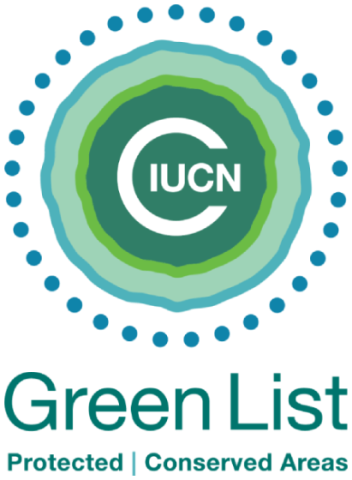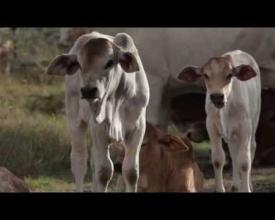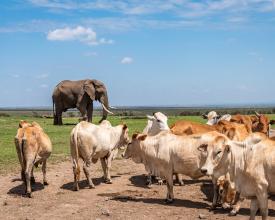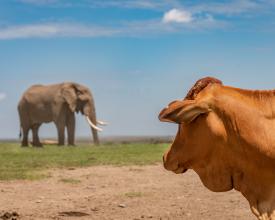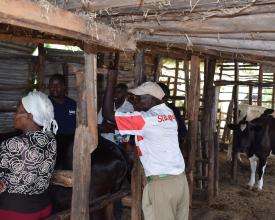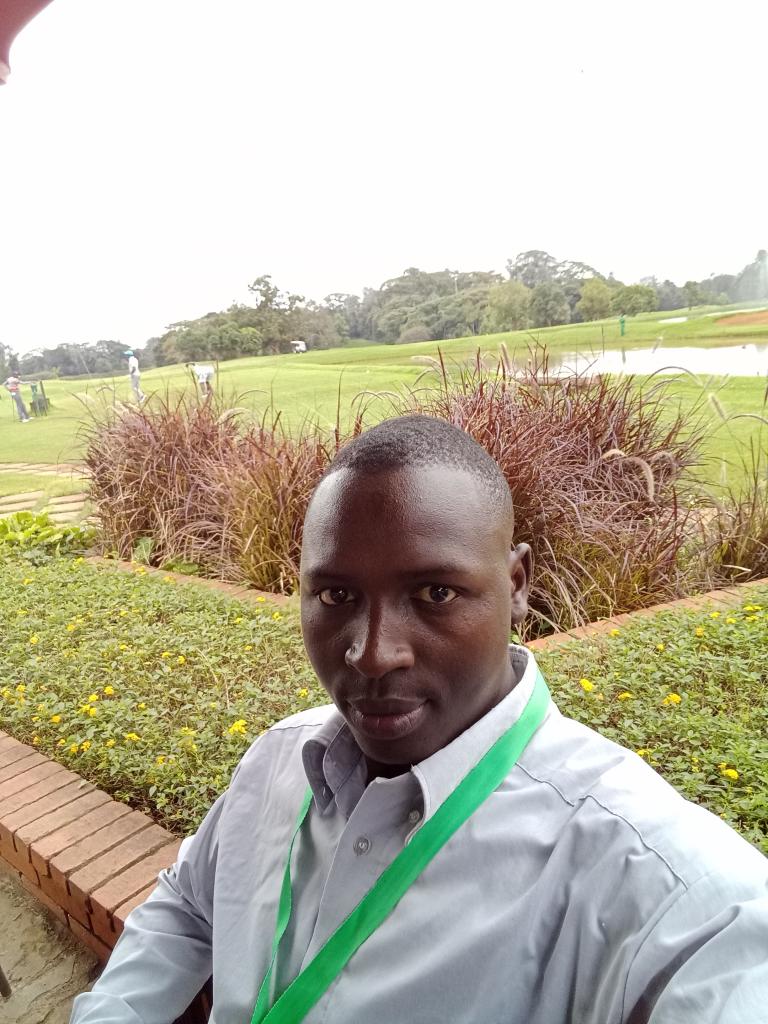
Integrating livestock and wildlife to reduce land degradation, enhance biodiversity and conservation
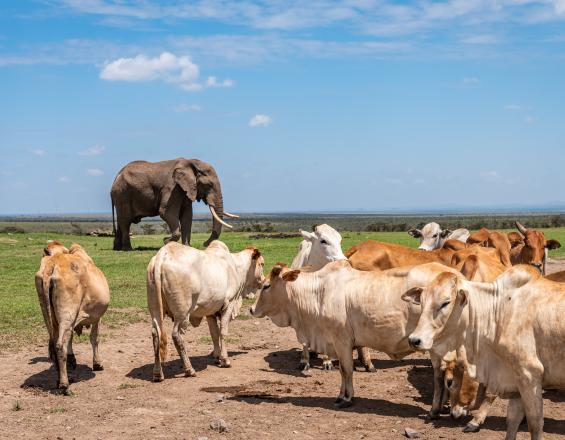
Ol Pejeta (OPC) is a private non-profit conservancy, registered Protected Area, and IUCN Green Listed. It is home to the largest population of Critically Endangered black rhino in E.Africa, the world’s last 2 northern white rhino and other Endangered species. OPC is in Laikipia County where rain-fed agriculture and livestock contribute >75% of household incomes.
This initiative challenges the traditional ‘either/or’ approach to conservation, demonstrating the benefits of integrating livestock with wildlife. Rather than setting aside land for conservation, the sustainable land management approach involves using cattle as a habitat management tool. Carefully managed grazing keeps rangeland healthy as well as ensuring land is productive. This additional revenue stream contributes critical income, all of which is reinvested in conservation and community development – extension services enhance livelihoods and resilience. The nature-based solution offers a model for conservation in areas where wildlife is usually not tolerated.
Context
Challenges addressed
The main threats to biodiversity at the conservancy are considered in the context of the surrounding area, where the environmental, social, and economic challenges are inter-related:
- Habitat loss from livestock encroachment. As human populations increase so does demand for land for settlement. Livestock encroachment increases the risk of human wildlife conflict and contributes to land degradation threatening wildlife and human livelihoods.
- Reliance on rain-fed agriculture. Pastoralists and small-scale farmers are reliant on the rain. With climate change, increased periods of drought and erratic rainfall has reduced pasture and impacted crop productivity.
- Limited livelihood opportunities. Livestock plays an important societal role which is further amplified with the limited availability of alternative livelihoods, particularly for women and youth.
A specific economic challenge for the conservancy is securing a sustainable and diverse income base – especially critical this year with the impact of COVID.
Location
Process
Summary of the process
Conservation success and the wellbeing of communities are inextricably linked. The building blocks reflect this. Block 1 (sustainable integrated land management) supports healthy habitats for wildlife on the conservancy whilst generating income that is invested in community development. Demonstration of this best practice approach in land and cattle management provides legitimacy when engaging with local communities on livestock matters as covered in Block 2. This complementary block (sustainable community livestock management) directly supports the livelihoods of communities whilst promoting sustainable natural resource management. This helps address key threats to biodiversity and generates support for conservation.
Building Blocks
Sustainable and integrated productive land management approach
The innovative integrated land management approach was pioneered by Ol Pejeta and other conservancies in Laikipia County, Kenya. It is a nature-based solution that enables a healthy habitat for wildlife and generates income that can be reinvested in conservation and community development. The approach has been implemented since 2004, along with a community development programme that includes agriculture extension services.
Cattle are integrated with wildlife across the conservancy in carefully managed grazing patterns that replicate the ancient movement of vast herds of ungulates that used to roam the land. As cattle are moved across the rangeland, grasses are kept short and healthy, encouraging those species and new growth that sustains wild herbivores. Cattle are kept in mobile bomas overnight to protect them from predation. This concentration also creates ecological hotspots where manure fertilizes new grass growth. The bomas are relocated every 1–14 days, depending on the weather.
The grass-fed cattle are of high quality and demand premium prices. They are sold under our Conservation Beef brand, generating income for Ol Pejeta. This approach means the land is productive as well as provides healthy habitat that supports a wide range of wildlife species. It also enables benefit-sharing of conservation for communities.
Enabling factors
- Strong management – ensuring cattle numbers achieve the right balance of rangeland management, productivity, and healthy habitat for wildlife.
- Community engagement – building strong trusted relationships with the community to support the approach.
- Adaptive management – continuous monitoring of the habitat, wildlife interactions, and cattle densities, to inform adaptation strategies as necessary.
Lesson learned
- Robust monitoring – ensuring grazing patterns and intensity are carefully managed so that habitat is maintained, and wildlife interactions are managed.
- Boma rotation – understanding when to move the mobile cattle bomas as this is dependent on the weather. For example, in dry periods the bomas can remain in situ for 14 days compared to 1-3 days in wet weather.
- Market linkages – importance of building strong networks along the supply chain, ensuring products reach market and price volatility is managed.
- Community engagement – importance of strong relationships with the community to engage in the initiative as well as general support for the approach.
Promoting sustainable livestock management to support livelihoods and conservation
Livestock plays a critical social and economic role in Laikipia – over 50% of the land is under livestock production. This building block aims to support local rural communities increase livestock productivity whilst reducing environmental damage. The approach supports livelihoods as well as addresses key threats to biodiversity.
Livestock extension services improve skills and knowledge in all aspects of livestock husbandry and natural resource management. Artificial insemination services are provided at affordable prices to improve cattle quality and can demand higher prices. Training and support are provided on:
- Husbandry – livestock disease management, health care, administration of drugs to prevent disease.
- Resource management – water and land management including best practice grazing management to support livestock and reduce land degradation.
- Alternative micro-enterprise – aimed at women and youth, support in establishing enterprises such as poultry and beekeeping.
Trained farmers are encouraged to share their knowledge and skills with other community members. This approach means more people are reached. Livelihoods are enhanced as well as building support for conservation through benefit-sharing.
Enabling factors
- Community engagement – building strong relationships with local communities to engage in the initiative and ensure the services meet their needs.
- Needs driven design – ensure extension services are designed in such a way that they address the needs of and are important to the pastoralist communities.
Lesson learned
- Trusted engagement with communities – important to build strong relationships with regular dialogue, to listen to their needs, and provide opportunities for feedback.
- Address the whole value chain – need to understand the whole chain, where there might be gaps, and how they can be addressed. For example, access to drugs emerged as an issue as the current supply was a very long distance away and unaffordable. We supported communities to access micro-finance, and facilitated local and fair priced access to drugs.
- Promote collaboration and knowledge-sharing – encourage farmers’ groups to work together, share learning from training with their peers and neighbours. This collective action also had benefits of greater buying power through economies of scale.
Impacts
Environmental:
- Improved habitat for wildlife. The solution has helped transform a working cattle ranch into a flagship wildlife conservancy. Since implementation, rangeland quality has improved and significant increases in species populations have been noted. Ol Pejeta now supports the largest number of critically endangered eastern black rhino in E.Africa and many other endangered species. A healthy prey population also supports some of the highest predator densities recorded in E.Africa.
Social:
- Empowering communities. Agriculture is the predominant sector for the rural communities surrounding Ol Pejeta. Livestock has both economic and cultural significance. We have showcased a model for land management that is productive and ecologically sustainable, demonstrating that the keeping of livestock does not need to come at the expense of wildlife.
Economic:
- Investment in conservation and community development. The livestock and agriculture business generates net 500,000 – 1m USD annually. This provides a critical source of revenue for Ol Pejeta that enables it to invest back in conservation and community development.
- Enhanced livelihoods for communities. The purchase of community cattle and artificial insemination services has increased income for communities. Complementary livestock extension services have further increased productivity as well as improved understanding of natural resource management.
Beneficiaries
- The c. 700 employees of Ol Pejeta who are part-funded through the income contribution the livestock and agriculture business makes to the conservancy.
- The c. 35,000 people from the 20 pastoral and farming communities surrounding the conservancy.
Sustainable Development Goals
Story
Revenue generated through the livestock and agriculture business provided a critical source of income to the Conservancy during COVID-19. In normal times, the Conservancy’s income is typically spread evenly across three sources – tourism, philanthropy and grants, and livestock and agriculture. With international and national tourism effectively halted, Ol Pejeta faced a c.2m USD operating deficit. We were forced to take significant cost cutting measures including redundancies, pay cuts, and a focus on critical operating costs only. Our zero poaching record was under threat. Even after these cuts, we faced an existential crisis. The livestock and agriculture business helped keep us operational from the sale of our ‘conservation beef’, fodder production and hay. Last year, it produced a record net contribution of just under 1m USD for the conservancy, almost double that of previous years. Without this income larger numbers of employees would likely have had to be made redundant and conservation and community programmes would have been severely compromised.
We are proud of the fact we are able to run a commercially profitable livestock business in a conservancy with lions and large herds of wild herbivores – a feat many would think impossible! This approach relies on our philosophy of working with, rather than against nature.
We believe this innovative approach to land regeneration and climate smart initiative can only work if it is profitable to the producer or operator, and we aim to keep proving that.

